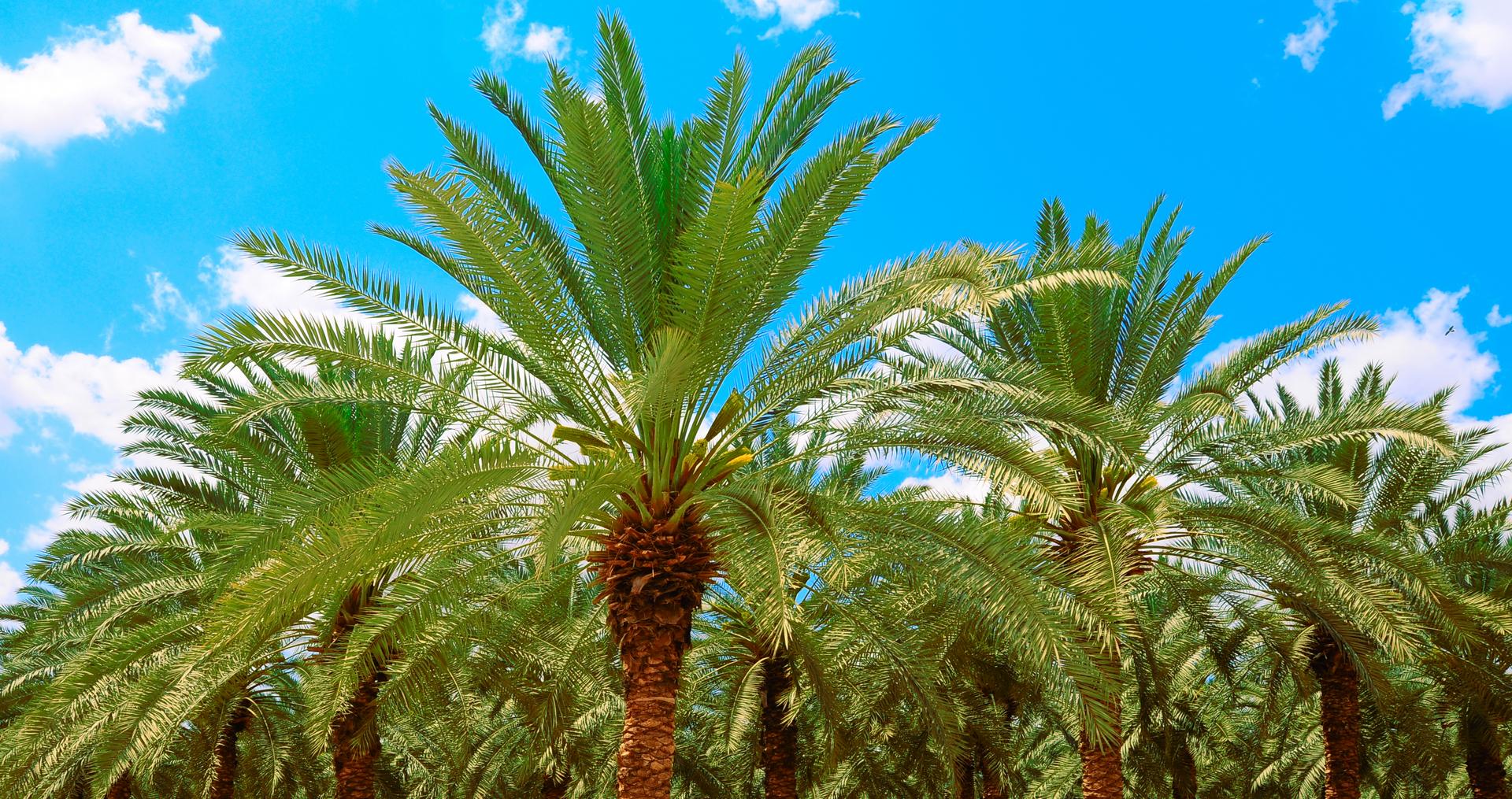Palm trees in the Bible
Hebrew: תָּמָר —transliteration: tamar —meaning: a palm tree
Palm trees of ancient Israel are primarily of the date-palm type.
Palm trees are described as “flourishing” (Psalm 92:12), tall (Song of Songs 7:7), “upright” (Jeremiah 10:5).
“Rising with slender stem 40 or 50, at times even 80, feet aloft, its only branches, the feathery, snow-like, pale-green fronds from 6 to 12 feet long, bending from its top, the palm attracts the eye wherever it is seen.”
The whole land of Israel was called by the Greeks and Romans Phoenicia, i.e., “the land of palms.”
The finest specimens of this tree grew at Jericho, which is also called “The City of Palms” (Deuteronomy 34:3) and Engedi (Ein Gedi) and along the banks of the Jordan River.
Tadmor an oasis city in the desert was called Palmyra by the Greeks and Romans, i.e., “The City of Palms.”
Palm branches are a symbol of victory.
After these things I looked, and behold, a great multitude… palm branches were in their hands —Revelation 7:9 excerpt
Branches of the palm tree were carried at the feast of Tabernacles (Leviticus 23:40).
At our Lord's triumphal entrance into Jerusalem the crowds took palm branches, and went forth to meet him, crying,
“Hosanna: Blessed is the King of Israel that cometh in the name of the Lord” (Matthew 21:8; John 12:13).
Women’s name
Various women in the Bible are named Tamar (palm tree). (See: TAMAR)
More information
